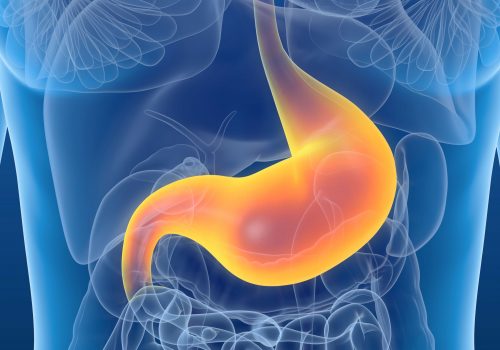When sipping on a warm cup of tea, you might not realize you’re indulging in a potent elixir for cellular health. Antioxidants in tea are like the knights in shining armor of the nutritional world, battling the free radicals that can wreak havoc on your cells. Free radicals are unstable molecules that can damage cells, leading to chronic diseases and aging. Choosing the right teas can enhance your body’s defense system, and understanding what makes these teas special is key.
Understanding Antioxidants and Their Role
Antioxidants are compounds that inhibit oxidation, a chemical reaction that can produce free radicals. The body has its own antioxidant defenses to keep free radicals in check, but our modern lifestyle often inundates us with more than our bodies can handle. This is where dietary antioxidants come into play. By neutralizing free radicals, antioxidants help prevent cellular damage and keep our systems running smoothly. They also aid in reducing inflammation, which is often at the root of many chronic diseases. Let’s explore some of the best teas for boosting antioxidant intake and promoting cellular health.
Green Tea: The Antioxidant Powerhouse
What Makes Green Tea Special?
Green tea is a favorite among health enthusiasts, and for good reason. It’s packed with catechins, particularly epigallocatechin gallate (EGCG), which is considered to be one of the most potent antioxidants. These catechins not only protect cells but also enhance brain function, support fat loss, and lower the risk of heart disease. The process of steaming and drying green tea leaves preserves the catechins, making it an antioxidant-rich choice.
Brewing Tips for Maximum Benefits
To maximize the antioxidant benefits of green tea, steep it in water that’s not boiling—around 160 to 180 degrees Fahrenheit is ideal. Boiling water can destroy the delicate catechins. Steep for about 3 minutes and consider adding a squeeze of lemon. The vitamin C in lemon juice can enhance the absorption of catechins, boosting the health benefits significantly. If you’re preparing iced green tea, double the tea quantity to ensure a robust flavor after chilling.
Real-Life Example
I once worked with a client who was seeking to lower her cholesterol levels naturally. By incorporating two cups of green tea into her daily routine, she was able to see a noticeable improvement in her cholesterol levels over six months, alongside a healthy diet and exercise. She also reported feeling more alert and energetic, attributing this to her new tea habit.
Rooibos Tea: The Caffeine-Free Alternative
The Unique Antioxidants in Rooibos
Rooibos tea, originating from South Africa, is caffeine-free, making it a fantastic option for evening relaxation. It’s rich in antioxidants like quercetin and aspalathin. These compounds are linked to heart health, improved blood circulation, and stress reduction. Aspalathin, in particular, has been studied for its ability to reduce fat storage in the body, potentially aiding weight management.
Rooibos for Stress Relief and Relaxation
One of the lesser-known benefits of rooibos is its ability to help with stress relief. Its calming properties can aid in relaxation, making it a great bedtime tea. For an added touch, brew rooibos with vanilla or cinnamon sticks for an aromatic and soothing experience. You can even try it with a splash of milk or a dollop of honey for a comforting treat.
Common Mistakes to Avoid
Many people make the mistake of not steeping rooibos tea long enough. To extract its full range of antioxidants, let it steep for at least 5 to 7 minutes. This allows the flavors and beneficial compounds to fully develop. Additionally, avoid using metal infusers, which can sometimes give the tea a metallic taste, detracting from its natural sweetness.
Hibiscus Tea: A Vibrant Choice
Antioxidants and Heart Health
Hibiscus tea is not only visually stunning with its deep red color but also a powerhouse of antioxidants like anthocyanins and flavonoids. These compounds have been linked to lower blood pressure and cholesterol levels, making hibiscus tea a heart-healthy choice. Its anti-inflammatory properties also help protect the liver and support overall wellness.
How to Enjoy Hibiscus Tea
Hibiscus tea is naturally tart, similar to cranberries. It can be enjoyed hot or cold. For an extra refreshing drink, try it iced with a hint of honey or agave syrup. It’s a perfect summer beverage that also supports your cardiovascular health. Hibiscus tea can also be used in cocktails or as a base for a punch, adding a vibrant color and a tangy twist to your drinks.
Case Study Insight
In a study published by the Journal of Nutrition, participants who consumed hibiscus tea daily for six weeks showed a significant reduction in systolic blood pressure. This highlights its potential as a natural remedy for hypertension. Anecdotally, a friend of mine who struggled with high blood pressure found that incorporating hibiscus tea into her diet, alongside her prescribed medication, helped her maintain healthier blood pressure levels.
Oolong Tea: The Metabolic Booster
Unique Blend of Antioxidants
Oolong tea is a semi-oxidized tea, offering a mix of catechins found in green tea and theaflavins found in black tea. This unique blend helps reduce oxidative stress and supports a healthy metabolism. The polyphenols in oolong tea have also been shown to promote bone health and dental health, making it a great all-rounder for your wellness routine.
Weight Management with Oolong
Oolong is often associated with weight management due to its metabolism-boosting properties. Drinking oolong tea can increase energy expenditure and fat oxidation, making it a favorite among those looking to shed a few pounds. Pairing oolong tea with a balanced diet and regular exercise can enhance its weight management benefits.
Brewing the Perfect Cup
To brew the perfect cup of oolong, use water that’s about 190 to 200 degrees Fahrenheit, and steep for 2 to 3 minutes. It’s a versatile tea that pairs well with a wide range of foods, from savory to sweet. Try pairing oolong with lightly spiced dishes or sweet pastries to complement its rich and floral notes.
Expanding Your Tea Repertoire
While green, rooibos, hibiscus, and oolong teas are fantastic options, don’t shy away from exploring others like white tea, which is known for its delicate flavor and high antioxidant levels, or black tea, which offers robust flavors and beneficial theaflavins. White tea, in particular, is minimally processed, which helps preserve its high levels of polyphenols.
Exploring White Tea
White tea is made from young leaves and buds, and it boasts a subtle and sweet flavor profile. Its high antioxidant content can help in maintaining skin health and promoting a youthful appearance. Brew white tea with water around 170 to 185 degrees Fahrenheit for 2 to 3 minutes to preserve its delicate flavors.
The Benefits of Black Tea
Black tea is known for its bold taste and theaflavins, which are antioxidants formed during the fermentation process. These compounds are linked to improved gut health and reduced inflammation. Black tea can be enjoyed on its own or with milk and sugar, making it a versatile choice for different palates.
Tips for Incorporating Tea into Your Daily Routine
- Start Your Day with Tea: Replace your morning coffee with a cup of green tea to kickstart your metabolism and boost your antioxidant intake early in the day. If you’re not a fan of the typical bitterness of green tea, try a milder variety like genmaicha, which contains roasted brown rice for a nutty flavor.
- Midday Pick-Me-Up: Oolong tea can be a great afternoon beverage to help maintain energy levels and focus without the jitters associated with coffee. Pair it with a light snack like almonds or dried fruit for a balanced energy boost.
- Relax in the Evening: Wind down with a calming cup of rooibos or chamomile tea to prepare for a restful night’s sleep. Chamomile is known for its calming effects, making it an excellent choice for those who struggle with insomnia or anxiety.
- Get Creative: Use brewed tea as a base for smoothies or in cooking. For example, use hibiscus tea to poach fruits or as a base for a refreshing iced tea cocktail. You can also infuse teas into broths or marinades for a unique flavor profile.
- Tea Blends: Experiment with creating your own tea blends. Mix different teas to enjoy a variety of flavors and benefits. For instance, combine green tea with peppermint leaves for a refreshing twist.
Common Mistakes and How to Avoid Them
- Using Boiling Water: As mentioned earlier, boiling water can destroy some delicate antioxidants. Always check the recommended water temperature for each type of tea. Investing in an electric kettle with variable temperature settings can help you get it just right.
- Short Steeping Times: Rushing the steeping process might mean missing out on the full spectrum of antioxidants. Be patient and let your tea steep adequately. For stronger teas, like black or pu-erh, longer steeping times can enhance flavor complexity.
- Stale Tea Leaves: Store your tea properly in a cool, dark place to preserve its antioxidant properties. Freshness matters when it comes to the quality of antioxidants. Airtight containers can help keep your teas fresh and aromatic.
- Overuse of Sweeteners: While a little honey or agave can enhance flavor, overuse can negate some health benefits. Try to enjoy your tea with minimal sweeteners to appreciate its natural taste and benefits.
Incorporating a variety of antioxidant-rich teas into your daily routine is a delicious and enjoyable way to support cellular health and overall well-being. By understanding the unique properties and benefits of each type of tea, you can tailor your choices to meet your health goals. So go ahead, brew a cup of your favorite tea, and toast to a healthier you!



